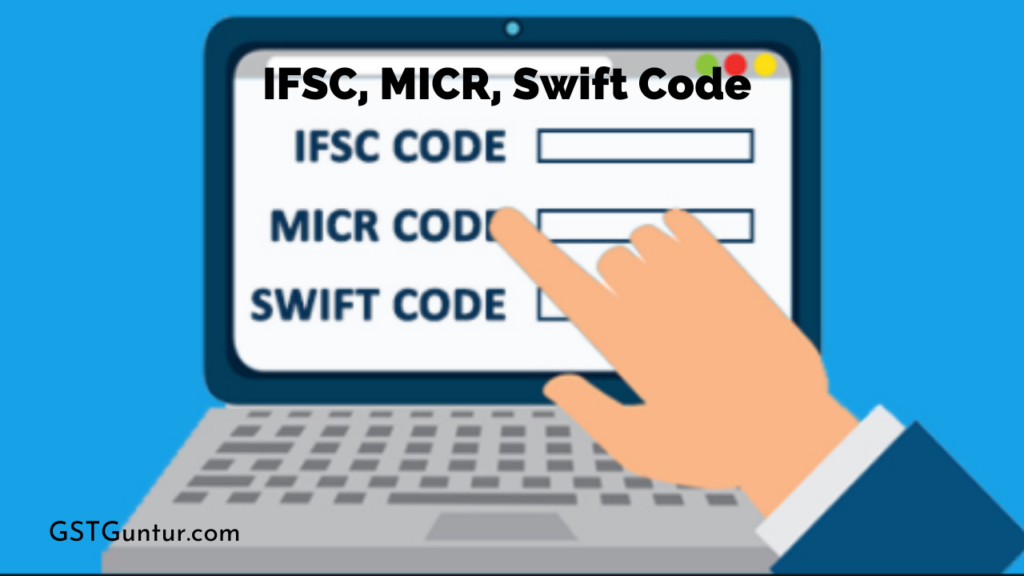IFSC, MICR, SWIFT Code: IFSC code is responsible for transferring electronic money between banks within India, for example, NEFT, RTGS and IMPS. MICR is considered to be Magnetic Ink Recognition Technology which is used for making cheque processing faster and simpler. The SWIFT code is introduced for the purpose of transferring money between banks; this is especially used for international wire transfers and can also be used for exchanging various messages between banks. In this article, we will have a detailed discussion about the topics IFSC, MICR, SWIFT code, Difference between IFSC and MICR, IFSC and SWIFT so that one can understand these terms more clearly without any confusions.
IFSC Code
IFSC, which is also known as the Indian Financial System Code, is considered to be a special 11 digit code that has been allotted to every bank branch that is available in India. For example, the IFSC code for the SBI branch that is located in Kolkata is considered to be SBIN0000001. When a payer has initiated a fund transfer, be it NEFT, RTGS or IMPS, he/she has to provide the bank details of the payee, for example, bank name, branch, account number and the IFSC code. Once the payer has successfully provided all the details of the payee’s bank account, then the fund will get transferred to the payee’s account without any delay with the help of the IFSC code. The number of errors in this process is zero. Fund transfer by the payer to the payee using the IFSC code is secure and convenient than the other methods of fund transfer. The transfer is done within seconds.
The IFSC code is an 11 digit number with
- The first four characters belong to the abbreviation of the bank.
- In the fifth place, there is the control character.
- The last six characters will represent the Code of a particular branch.
MICR Code
The MICR code is considered to be a 9 digit numeric code that was introduced to uniquely identify a bank branch that has been participating in the ECS Credit scheme. MICR is considered to be the acronym for Magnetic Ink Character Recognition.
ECS Credit is something that is used by different institutions for affording credit to a large number of beneficiaries ( for example, employees, investors, etc.) who have accounts in various bank branches at various locations within the area of an ECS centre. This gets executed by raising a single debit to the bank account of the user’s institution. ECS Credit is known for enabling payment of amounts for dividend distribution, interest, pension, salary, etc., of the user institution.
MICR code is a 9 digit code that helps in identifying the location of a particular bank branch. The MICR code which gets allotted to a particular bank branch gets printed on the MICR band of cheques that have been issued by the bank branches.
SWIFT Code
The SWIFT code is considered to be an 8 or 11 digit alphanumeric code that is responsible for uniquely identifying financial institutions. A SWIFT Code is considered the universal way of identifying banks all over the world. SWIFT Code is considered to be the acronym of the Society for Worldwide Interbank Financial Telecommunication code. It is considered to be the standard format for Bank Identifier Codes (BIC); this is approved by the International Standard Organization (ISO) and is responsible for representing a particular bank or bank branch. These codes were introduced to the public with the purpose of transferring money between banks, especially in the case of international wire transfers, and can also be used for exchanging other messages between banks.
The SWIFT Code consists of 8 to 11 digits. The Code is formatted as below:-
- First four characters – Bank code.
- Next two characters – Country Code
- Next two characters – Location code
- Last three characters – Branch code
Difference Between IFSC Code and MICR Code
| IFSC Code | MICR Code |
| This Code is used for facilitating the electronic transfer of funds between banks and various individuals in India. | MICR Code was introduced in order to make cheque processing simpler and efficient than before. |
| IFSC code is considered to be 11 digits alphanumeric Code. | MICR Code is considered to be a 9 digit code. |
| The first four characters in the Code are there for indicating the name of the bank. | The first three characters of the Code are there for indicating the city in which the bank branch is situated. |
| The last six digits of the Code are there to indicate the branch location. | The last three digits refer to the Code of the bank branch. |
Difference Between Swift Code And IFSC Code
| SWIFT Code | IFSC Code |
| SWIFT code is considered to be the acronym for ‘Society for Worldwide Interbank Financial Telecommunication.’ | IFSC Code stands for ‘Indian Financial System Code’. |
| This is responsible for international money transfers. | This is responsible for domestic money transfers ( within the boundaries of India). |
| This Code is developed by International Standard Organization (ISO). | This Code is developed by the Reserve Bank Of India. |
| This Code has a total of 8 or 11 characters. | This Code contains a total of 11 characters. |
Conclusion on IFSC, MICR, SWIFT Code
From the above article, one can easily understand the purposes for which the codes were introduced to the public. The sole objective of each Code was to make things simpler and more efficient so that everyone who uses it can get satisfied wholly.
